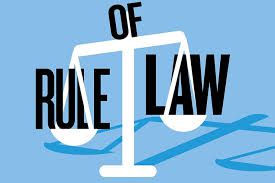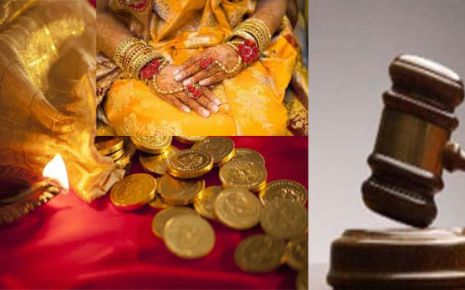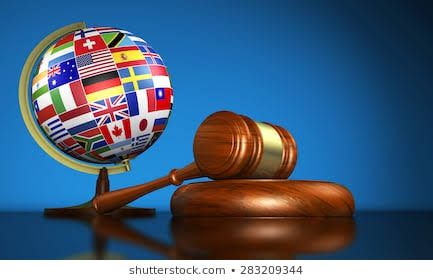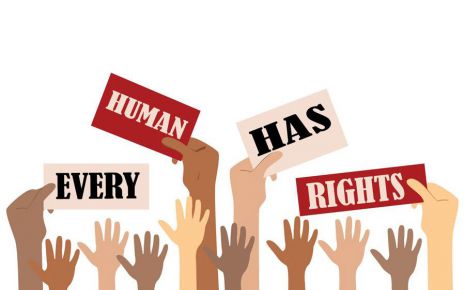Re: Prashant Bhushan: Contempt Case For Tweets Made Against Hon'ble Chief Justice Of India
The case is one of the most prominent ones that the nation saw in 2020. It has
to do with two tweets that Prashant Bhushan, an attorney, posted against the
Supreme Court and the Hon'ble Chief Justice of India. Mahek Masheshwari filed a
petition in response to the tweets, and the courts handled it administratively;
nonetheless, the petition was submitted without the Attorney General of India's
permission.
After the petition was listed before the court for the purpose of issuing the necessary orders, the Hon'ble Court took suo moto cognizance of the tweets and issued notices to Prashant Bhushan (Contemnor No. 1 in the present case), Twitter Inc. (Contemnor No. 2 in the present case), and Attorney General of India on the grounds that the tweets were of a nature that would have negatively affected the reputation of the Hon'ble Chief Justice of India and the Supreme Court of The Contemnor No. 1 produced a thorough affidavit on his behalf, totaling 463 pages (plus annexure), in which he attempted to defend his tweets on a variety of grounds, including bona fide commentary and legitimately expressed angst against the Hon. SC. In a 108-page ruling, the court found Prashant Bhushan to be in criminal contempt of court and held him accountable for his actions. However, the case against Contemnor No. 2 was dismissed because it was simply an intermediary.
The Hon'ble Supreme Court displayed its magnanimity and issued a symbolic fine of Rupees 1 failing which the contemnor had to endure three months of simple jail. This was done despite the defendant neither offering an apology nor withdrawing the affidavit.
Primary Details Of The Case
Case No.: Suo Motu Contempt Petition (Crl.) No. 1 of 2020
Jurisdiction: Supreme Court of India
Case Decided On: August 14, 2020
Judges: Justice Arun Mishra, Justice B.R. Gavai, Justice Krishna Murari
Legal Provisions Involved: Constitution of India, Article 19(1)(a), 129, 142; Contempt of Courts Act, 1971, Section 2(c); Rule 3 of The Rulesto Regulate Proceedings for Contempt of the Supreme Court, 1975
Brief Facts Of The Case
In the present case, Prashant Bhushan a well-renowned Advocate with over 30 years of Standing at Hon'ble Supreme Court and Delhi High Court, famously known for his public interest lawyering made tweets against Hon'ble Chief Justice and The Supreme Court of India. They are reproduced as follows:
"CJI rides a 50 Lakh motorcycle belonging to a BJP leader at Raj Bhavan Nagpur, without a mask or helmet, at a time when he keeps the SC in Lockdown mode denying citizens their fundamental right to access justice!"
And
"When historians in future look back at the last 6 years to see how democracy has been destroyed in India even without a formal Emergency, they will particularly mark the role of the Supreme Court in this destruction, & more particularly the role of the last 4 CJIs."
Pursuant to the tweets, one advocate named Mahek Maheshwari, filed a petition without obtaining the consent of the Learned Attorney General of India against the above-mentioned tweets and the matter was taken on the administrative side. Subsequently, after being listed on the administrative side the court directed the matter to be listed on the judicial side for the passing of the appropriate order.
The matter was listed on July 22, 2020, and after prima facie observing the tweets the Hon'ble Court found that the tweets were of the nature of disrespecting the administration of justice and were capable of bringing down the dignity of Hon'ble Chief Justice and the Supreme Court in the eyes of the public at large. As such, the court took suo moto cognizance in this matter and directed the Contemnors to file their reply.
Issues Involved In The Case
Arguments Of The Parties
Appellants: Contemnor No. 1 (Prashant Bhushan) Represented by Dushyant Dave & Contemor No. 2 (Twitter Inc.) Represented by Sajan Poovayya
Coming to the second tweet in question, it was argued that it had three distinct elements which are as follows:
Legal Aspects Involved In The Case
This most crucial aspect the case revolves around is the thin line of gap between Freedom of Speech and expression under Article 19(1) (a) and contempt of court being the reasonable restriction of the same under Article 19(2). The Hon'ble Court again clarified that the contempt powers are conferred upon the court by the Constitution of India (Article 129) and the manner in which contempt is initiated is not limited to Contempt of Court Act, 1971 and it is well within the powers of the Hon'ble Court to initiate suo moto contempt without consent of Attorney General of India, the only limitation being the procedures laid down in PN Duda's judgment needs to be followed.
Article 19(1) (a) of the Constitution of India states "All citizens shall have the right (a) to freedom of speech and expression" and it is subject to the restriction provided under 19(2) which reads
"Nothing in sub clause (a) of clause (1) shall affect the operation of any existing law, or prevent the State from making any law, in so far as such law imposes reasonable restrictions on the exercise of the right conferred by the said sub clause in the interests of the sovereignty and integrity of India, the security of the State, friendly relations with foreign States, public order, decency or morality or in relation to contempt of court, defamation or incitement to an offence". Any act/comment on any judge which lowers public faith in the judiciary or interferes with the administration of justice comes within the definition of "criminal contempt".
Section 2(c) of the Contempt of Courts Act, 1971 defines 'criminal contempt' which reads as follows:
(c) "criminal contempt" means the publication (whether by words, spoken or written, or by signs, or by visible representation, or otherwise) of any matter or the doing of any other act whatsoever which:
Judgment In Brief
Commentary
In my opinion, the decisions in the present case, grossly undermines the freedom of speech and expression. India, one of the largest democracies is going through a phase where dissenters, protestors, activists are charged under criminal laws including the draconian legislation The Unlawful Activities (Prevention) Act, 1967 (UAPA). The judiciary had interfered time and again and on various occasions observed that dissent give a chance to improve, however, in the instant case the court failed to apply the same.
The court failed to appreciate/evaluate/engage with the detailed affidavit in reply on behalf of Contemnor No. 1 running into 134 pages, which along with annexures run into 463 pages. Contemnor No. 1 through the detailed reply consisting of 47 annexures, had tried to justify how he reached to the conclusion regarding the tweets in question.
The Annexures contained statements made by Judges, Reports of Law Commission, Opinions of eminent jurists (including retired judges) and several order/ judgments including that of Hon'ble Court itself to justify his stand. However, complete non-discussion of the same in 108-page long judgment appears to set a bad precedent. The contempt of court has been introduced for efficient working of court without any fear, however, many instances suggest that judges try to protect their self-esteem through misusing the contempt law.
After the petition was listed before the court for the purpose of issuing the necessary orders, the Hon'ble Court took suo moto cognizance of the tweets and issued notices to Prashant Bhushan (Contemnor No. 1 in the present case), Twitter Inc. (Contemnor No. 2 in the present case), and Attorney General of India on the grounds that the tweets were of a nature that would have negatively affected the reputation of the Hon'ble Chief Justice of India and the Supreme Court of The Contemnor No. 1 produced a thorough affidavit on his behalf, totaling 463 pages (plus annexure), in which he attempted to defend his tweets on a variety of grounds, including bona fide commentary and legitimately expressed angst against the Hon. SC. In a 108-page ruling, the court found Prashant Bhushan to be in criminal contempt of court and held him accountable for his actions. However, the case against Contemnor No. 2 was dismissed because it was simply an intermediary.
The Hon'ble Supreme Court displayed its magnanimity and issued a symbolic fine of Rupees 1 failing which the contemnor had to endure three months of simple jail. This was done despite the defendant neither offering an apology nor withdrawing the affidavit.
Primary Details Of The Case
Case No.: Suo Motu Contempt Petition (Crl.) No. 1 of 2020
Jurisdiction: Supreme Court of India
Case Decided On: August 14, 2020
Judges: Justice Arun Mishra, Justice B.R. Gavai, Justice Krishna Murari
Legal Provisions Involved: Constitution of India, Article 19(1)(a), 129, 142; Contempt of Courts Act, 1971, Section 2(c); Rule 3 of The Rulesto Regulate Proceedings for Contempt of the Supreme Court, 1975
Brief Facts Of The Case
In the present case, Prashant Bhushan a well-renowned Advocate with over 30 years of Standing at Hon'ble Supreme Court and Delhi High Court, famously known for his public interest lawyering made tweets against Hon'ble Chief Justice and The Supreme Court of India. They are reproduced as follows:
"CJI rides a 50 Lakh motorcycle belonging to a BJP leader at Raj Bhavan Nagpur, without a mask or helmet, at a time when he keeps the SC in Lockdown mode denying citizens their fundamental right to access justice!"
And
"When historians in future look back at the last 6 years to see how democracy has been destroyed in India even without a formal Emergency, they will particularly mark the role of the Supreme Court in this destruction, & more particularly the role of the last 4 CJIs."
Pursuant to the tweets, one advocate named Mahek Maheshwari, filed a petition without obtaining the consent of the Learned Attorney General of India against the above-mentioned tweets and the matter was taken on the administrative side. Subsequently, after being listed on the administrative side the court directed the matter to be listed on the judicial side for the passing of the appropriate order.
The matter was listed on July 22, 2020, and after prima facie observing the tweets the Hon'ble Court found that the tweets were of the nature of disrespecting the administration of justice and were capable of bringing down the dignity of Hon'ble Chief Justice and the Supreme Court in the eyes of the public at large. As such, the court took suo moto cognizance in this matter and directed the Contemnors to file their reply.
Issues Involved In The Case
- Whether contempt proceedings cannot be initiated in the present case without the consent of the Attorney General of India?
- Whether the tweets in question are entitled to protection under 19(1) (a) of the Constitution of India as fair criticism made in good faith in the larger public interest or not?
- Whether the intermediary i.e., Twitter in the instant case, be held liable for contempt as per the facts of the case?
Arguments Of The Parties
Appellants: Contemnor No. 1 (Prashant Bhushan) Represented by Dushyant Dave & Contemor No. 2 (Twitter Inc.) Represented by Sajan Poovayya
- The preliminary objection was regarding the maintainability of the petition for the reason that the proceedings were initiated after a petition filed by one Mahek Maheswari which was filed without the consent of the Learned Attorney General of India and as such the same cannot be treated as a suo moto petition.
- The order issuing notice has no mention of any act of the Contemnor No. 1 based on which he can be charged with criminal contempt. Further, it was argued that even if the tweets are taken strongly into account, it could not be considered anything more than a defamatory attack on CJI and the past three CJI too in their individual capacity and as such, it cannot be said that the said tweets will interfere with due course of justice or administration of law.
- Coming on the tweets in question, it was argued that the first tweet was made to express his anguish at the virtual functioning of the Hon'ble SC where hardly any cases were heard whereas on the other hand Hon'ble CJ was seen with groups of people without a mask. If such a statement is considered as contempt, the same would create an unreasonable restriction to Article 19(1)(a).
Coming to the second tweet in question, it was argued that it had three distinct elements which are as follows:
- Democracy has been destroyed in the last six years.
- The Supreme Court played a substantial role in allowing the destruction of democracy.
- Regarding the role of the last four Chief Justices in allowing the destruction of democracy.
- Chief Justice is not Supreme Court and as such making comments regarding how Chief Justice conducts will not come under the purview of Criminal Contempt. Considering Supreme Court as CJI and CJI as Supreme Court would be nothing more than undermining the institution itself. The tweets were against the present CJI/ past three Chief Justices in their individual capacity.
- The order issuing notice had no mention of any act of Contemnor No. 1 for which he could be held liable under Criminal Contempt. Further, even if the tweets are taken for maximum consideration, it is a mere defamatory attack on the judge, and such proceeding with contempt is not fair.
- The Contemnor No. 1 had taken up several matters of public interest before the Supreme Court and Delhi High Court concerning the health of democracy and its institutions including accountability in the judiciary and as such, the court should not proceed against him.
- On behalf of Twitter, it was argued that it is merely an 'intermediary' within the meaning of IT Act, 2000 and it has neither published nor authored the tweets. It was further argued that it acts merely as a display board and has no editorial board. Further, to show its bonafide it was argued that after the court had taken cognizance on tweets in question, Twitter disabled and blocked access to the said tweets.
Legal Aspects Involved In The Case
This most crucial aspect the case revolves around is the thin line of gap between Freedom of Speech and expression under Article 19(1) (a) and contempt of court being the reasonable restriction of the same under Article 19(2). The Hon'ble Court again clarified that the contempt powers are conferred upon the court by the Constitution of India (Article 129) and the manner in which contempt is initiated is not limited to Contempt of Court Act, 1971 and it is well within the powers of the Hon'ble Court to initiate suo moto contempt without consent of Attorney General of India, the only limitation being the procedures laid down in PN Duda's judgment needs to be followed.
Article 19(1) (a) of the Constitution of India states "All citizens shall have the right (a) to freedom of speech and expression" and it is subject to the restriction provided under 19(2) which reads
"Nothing in sub clause (a) of clause (1) shall affect the operation of any existing law, or prevent the State from making any law, in so far as such law imposes reasonable restrictions on the exercise of the right conferred by the said sub clause in the interests of the sovereignty and integrity of India, the security of the State, friendly relations with foreign States, public order, decency or morality or in relation to contempt of court, defamation or incitement to an offence". Any act/comment on any judge which lowers public faith in the judiciary or interferes with the administration of justice comes within the definition of "criminal contempt".
Section 2(c) of the Contempt of Courts Act, 1971 defines 'criminal contempt' which reads as follows:
(c) "criminal contempt" means the publication (whether by words, spoken or written, or by signs, or by visible representation, or otherwise) of any matter or the doing of any other act whatsoever which:
- scandalises or tends to scandalise, or lowers or tends to lower the authority of, any court; or
- prejudices, or interferes or tends to interfere with, the due course of any judicial proceeding; or
- interferes or tends to interfere with, or obstructs or tends to obstruct, the administration of justice in any other manner;
Judgment In Brief
- Considering the facts and circumstances of the case, the Court held Prashant Bhushan liable for criminal contempt whereas, the notice issued to Contemnor No. 2 (Twitter) was discharged.
- The contention regarding the maintainability of the petition had already been considered by the Supreme Court in several cases. It was observed that the manner to initiate contempt is not limited by provisions of Contempt of Courts Act, 1971 but the source of such power is the Constitution (Article 129 to be specific) itself. In case of suo moto contempt petitions, there is no need of taking consent from anybody and the Court can initiate proceedings based on the information received.
- It was observed that if a person while exercising his right under 19(1)(a), bonafidely exceeds right in the public interest, the court would show its magnanimity and will be slow in exercising contempt jurisdiction. However, if such a statement is made against a judge having an adverse effect on the administration of justice or maligning the image of the judiciary, court cannot be supposed to be a silent spectator and would be entitled to invoke contempt jurisdiction.
- It was observed that the statement "CJI Rides..........time when he keeps the SC in Lockdown mode denying citizens their fundamental right to access justice" is completely false, malicious and scandalous undermining dignity and authority of administration of justice for the reason being that the alleged Contemnor No. 1 himself appeared in various matters through video conferencing.
- It was observed that the second tweet is a clear criticism about the institution of the Supreme Court and institution of Chief Justice of India and the tweets clearly gave an impression that the judges presiding the Supreme Court in the last six years played a role in the destruction of democracy and the last four CJI's in particular. The tweets tend to shake public confidence in the institution of the judiciary and it cannot be considered as a fair criticism made in bonafide public interest.
Commentary
In my opinion, the decisions in the present case, grossly undermines the freedom of speech and expression. India, one of the largest democracies is going through a phase where dissenters, protestors, activists are charged under criminal laws including the draconian legislation The Unlawful Activities (Prevention) Act, 1967 (UAPA). The judiciary had interfered time and again and on various occasions observed that dissent give a chance to improve, however, in the instant case the court failed to apply the same.
The court failed to appreciate/evaluate/engage with the detailed affidavit in reply on behalf of Contemnor No. 1 running into 134 pages, which along with annexures run into 463 pages. Contemnor No. 1 through the detailed reply consisting of 47 annexures, had tried to justify how he reached to the conclusion regarding the tweets in question.
The Annexures contained statements made by Judges, Reports of Law Commission, Opinions of eminent jurists (including retired judges) and several order/ judgments including that of Hon'ble Court itself to justify his stand. However, complete non-discussion of the same in 108-page long judgment appears to set a bad precedent. The contempt of court has been introduced for efficient working of court without any fear, however, many instances suggest that judges try to protect their self-esteem through misusing the contempt law.
Law Article in India
Legal Question & Answers
Lawyers in India - Search By City
LawArticles
How To File For Mutual Divorce In Delhi

How To File For Mutual Divorce In Delhi Mutual Consent Divorce is the Simplest Way to Obtain a D...
Increased Age For Girls Marriage

It is hoped that the Prohibition of Child Marriage (Amendment) Bill, 2021, which intends to inc...
Facade of Social Media

One may very easily get absorbed in the lives of others as one scrolls through a Facebook news ...
Section 482 CrPc - Quashing Of FIR: Guid...

The Inherent power under Section 482 in The Code Of Criminal Procedure, 1973 (37th Chapter of t...
The Uniform Civil Code (UCC) in India: A...

The Uniform Civil Code (UCC) is a concept that proposes the unification of personal laws across...
Role Of Artificial Intelligence In Legal...

Artificial intelligence (AI) is revolutionizing various sectors of the economy, and the legal i...








Please Drop Your Comments